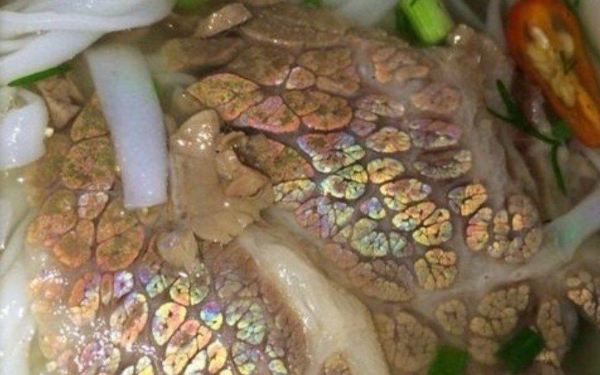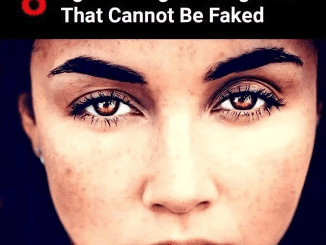Have you ever reached for a slice of roast beef, only to find it shimmering with rainbow colors under the light? This sight can be both fascinating and a little unsettling, raising questions about whether it’s safe to eat. So, what causes this colorful phenomenon on your meat, and is it a sign that something’s wrong? Let’s delve into the science behind why some beef cuts reflect a spectrum of colors and whether you should worry about it.
The Phenomenon of Iridescence: Why Beef Shines with a Rainbow Glow

When you see a rainbow of colors on a piece of beef, it’s due to a phenomenon called structural color. Unlike pigments, which produce colors through chemical composition, structural color arises from the physical structure of an object. This effect happens when light waves interact with tiny structures on the surface, causing the light to diffract, or split, into various colors.
In beef, this iridescence comes from microscopic ridges and fibers on the meat’s surface. When light strikes the cut surface of the meat, it bounces off these fibers, scattering in different directions and splitting into a spectrum. This diffraction of light creates the dazzling rainbow effect you see, similar to the way light shimmers off a soap bubble or butterfly wing.
Why You’ll See This Effect on Deli Meats Like Roast Beef
You may notice this iridescence more often on deli meats like roast beef or pastrami than on other types of meat. The primary reason? Smoothness. When meat is sliced very thinly with a commercial-grade slicer, the resulting surface is incredibly smooth and even. This smoothness is ideal for light diffraction, as the light is reflected in a consistent pattern across the meat’s surface, making the rainbow effect much more noticeable.
In contrast, meat that’s roughly chopped or cut at home has an irregular surface, which scatters light in random directions and reduces the chance of seeing a rainbow. Additionally, iridescence tends to be more visible on darker meats, as the dark background makes the colors more pronounced. So if you’re a fan of cold cuts, you’re likely to encounter this phenomenon fairly regularly.
Is Iridescence a Sign of Spoilage?
The short answer is no—iridescence alone does not indicate that meat has gone bad. The colorful sheen is purely a result of the way light interacts with the meat’s structure. However, that doesn’t mean you should ignore other signs of spoilage. While a harmless rainbow on your roast beef isn’t a red flag, a greenish tint can be cause for concern.
According to the USDA, a green hue may appear on meat due to certain pigments in the muscle that change color when exposed to heat or during processing. However, a green color can also indicate spoilage from bacteria or mold. If you see a green tint, always inspect the meat further. Does it have an off-putting odor? Is it sticky or slimy to the touch? These are clear signs of spoilage, and you should discard the meat if it exhibits any of them.
Other Common Myths About Meat Iridescence
This phenomenon often leads to misconceptions. Let’s clarify a few:
1. Iridescence Means the Meat is Chemical-Laden
Some people believe that iridescence on meat is a result of chemical additives or preservatives. In reality, this is a myth. The rainbow colors are simply a result of light diffraction and have nothing to do with chemical substances. This effect can occur on any meat surface with smoothness and specific structural characteristics, whether it’s organic or conventionally raised meat.
2. Iridescent Meat is Nutritionally Inferior

Another misconception is that iridescent meat has somehow lost its nutritional value. The appearance of a rainbow sheen does not affect the meat’s nutritional content. It’s still rich in protein, vitamins, and minerals. The diffraction phenomenon occurs independently of the meat’s freshness or nutritional profile, so you can rest assured that your iridescent deli meat is still nourishing.
How to Handle Iridescent Meat Safely
If you’re concerned about whether iridescent meat is safe to eat, it’s always good to conduct a quick check. Here’s a short checklist you can follow to make sure your meat is safe:
1. Check the Smell
Take a whiff of the meat. If it smells fresh and has no sour or off-putting odor, it’s probably safe to eat. Spoiled meat typically has a rancid smell that’s easy to identify.
2. Inspect the Texture
Give the meat a touch. Fresh meat should feel firm to the touch. If it feels sticky or slimy, it’s likely starting to spoil, and you should avoid eating it.
3. Look at the Color Beyond the Iridescence

Observe the meat’s color overall. While a rainbow-like sheen is normal, any green or grayish patches that look unnatural could indicate bacterial growth. When in doubt, it’s better to err on the side of caution and discard any questionable meat.
4. Mind the Sell-By Date
Finally, always check the sell-by or use-by date on the packaging. Even if the meat looks and smells fine, it’s best not to consume it past its labeled date.
When Does Iridescence Appear on Other Foods?
Interestingly, iridescence isn’t unique to beef. It can appear on other types of meat and certain foods as well. For example:
- Poultry: You might notice a rainbow effect on sliced turkey breast, especially when it’s thinly cut and has a smooth surface.
- Fish: Fresh fish, such as salmon or trout, can also show iridescence due to the natural oils on its skin.
- Vegetables: Certain vegetables, like thinly sliced carrots, can reflect light in ways that produce a rainbow effect, though this is rarer.
The common thread is a smooth surface with specific structural properties that enable light diffraction. In meats, this effect is most often seen on deli slices and finely cut steaks, where the surfaces are polished and smooth.

Why Iridescence is Actually a Good Sign
While the rainbow colors might give you pause, iridescence can be a sign of freshness in terms of structural integrity. The effect only occurs when the muscle fibers are intact enough to refract light properly. In other words, if your roast beef is shimmering in the light, it means the meat has retained its muscle structure well. So, the next time you see this colorful effect on your deli meats, remember that it’s just science at work, not a cause for alarm.
Conclusion: Enjoy Your Meat with Confidence
Understanding the science behind iridescence can put your mind at ease the next time you spot a rainbow on your roast beef. This phenomenon, caused by the diffraction of light across the meat’s smooth surface, is entirely natural and does not impact the safety or nutritional value of your food.
When in doubt, you can always rely on the smell, texture, and color of your meat to determine its freshness. But when it comes to that shimmering sheen, there’s no need to worry—it’s just a little light show on your plate, reminding us of the fascinating ways in which science intersects with everyday life. So, go ahead, enjoy that sandwich, and appreciate the rainbow on your roast beef as a tiny culinary spectacle.


